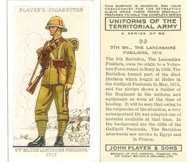Origins of Summer Uniforms
 The Vietnam War, along with various colonial conflicts further pushed the various armies to create clothing that provided comfort and was able to stand up to the rigors of very harsh conditions. Leather had already been replaced by canvas over the years, but by the 1970s and 1980s even the leather for boots gave way to other materials.
The Vietnam War, along with various colonial conflicts further pushed the various armies to create clothing that provided comfort and was able to stand up to the rigors of very harsh conditions. Leather had already been replaced by canvas over the years, but by the 1970s and 1980s even the leather for boots gave way to other materials.
Today’s soldiers have the benefit of the latest technology, which includes more comfortable shoes – that are a world away from the spit-and-polish leather boots – as well as sunglasses to provide protection from the sun (although sun goggles and even early sun glasses were used in various Victorian Era African campaigns as well). The uniforms, which now even provide digital patterns, are looser fitting with more pockets and are better suited to a variety of environments. There are even options for wearing a “Camel Back”–style water system rather than the traditional canteen!
{default} While soldiers will still have too much to carry, at least today’s uniforms may offer a bit more comfort than those from the past. And whether global warming is a real truth or just a possibility, let’s hope our men and women in uniform can stay cool wherever they go.
While soldiers will still have too much to carry, at least today’s uniforms may offer a bit more comfort than those from the past. And whether global warming is a real truth or just a possibility, let’s hope our men and women in uniform can stay cool wherever they go.
New York-based freelance writer, Peter Suciu, is the author of Armchair General magazine’s regular "Badges of Honor" department and is a frequent contributor of Web articles on this site.

